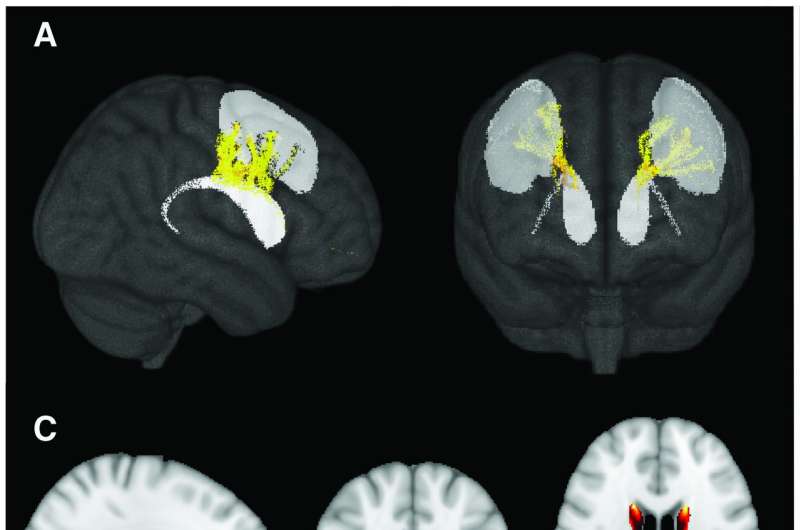April 5, 2023 report
This article has been reviewed according to Science X's editorial process and policies. Editors have highlighted the following attributes while ensuring the content's credibility:
fact-checked
peer-reviewed publication
trusted source
proofread
Structural changes in habit-forming brain circuitry linked to eating disorders

Researchers at the University of Pennsylvania and Stanford University School of Medicine have teamed up to investigate the brain mechanisms at work when habit learning and binge eating behaviors converge. In the study, "Human habit neural circuitry may be perturbed in eating disorders," published in Science Translational Medicine, the researchers found circuit-based mechanisms mediating habit formation implicated in habit-driven eating behavior; specifically, alterations in brain structures related to dopamine signaling.
The development of habits is a process of repeatedly linking a rewarding behavior with contextual stimuli, a stimulus other than a person's main focus or reason for engaging in a behavior. With time, contextual stimuli alone can elicit the behavior, even without the reward. This disassociation of behavior from the original goal makes habits difficult to change even if the outcome of the behavior is no longer desirable or becomes harmful.
Most habits are harmless, beneficial even. Many repetitive behaviors can become automated habits, like switching on or off a commonly used light, closing and locking the front door when arriving home, or entering a password to access a frequently used device. The action is automated while focusing on other goal-oriented tasks, for example, entering the password on a work computer while thinking about the email that needs to be sent. The same type of automation can occur with thoughts, motivational impulses and physical responses.
However, habit formation can also contribute to maladaptive behaviors in brain disorders that resist treatment. Here, the reason for a behavior is seemingly ignored by the brain, so the automation persists. How these brain circuits are altered in psychiatric disorders remains unclear.
The researchers point to past studies in humans and animals where circuit-based brain mechanisms were found to be involved in both promoting and opposing the development of habitual behaviors. In this way, a healthy brain is a mix of habitual and external goal-oriented behaviors.
To investigate, the researchers used structural connectivity of brain subregions involved in habitual behavior. The habit-promoting striatum primarily has connectivity with the sensorimotor cortex, whereas the habit-opposing striatum has connectivity with associative cortical regions. The different connectivity patterns led the researchers to focus on the sensorimotor subregion of the putamen.
The study revealed that "...multivariate connectivity of the sensorimotor putamen was altered in humans with binge eating disorder and bulimia nervosa and that the degree of alteration correlated with severity of disordered eating behavior."
The extent of this circuit change correlated with structural characteristics in the sensorimotor putamen and decreased dopamine receptor binding in the part of the brain responsible for voluntary actions. The finding is consistent with previously reported microstructural changes and dopamine signaling mediating habit learning in animal models.
The study findings suggest that the formation of a structural neural circuit links habit learning and binge eating behavior in humans. The authors conclude, "Future treatments involving modulation of these circuit-based mechanisms may potentially provide a means to treat habitual behaviors that underlie the treatment-resistant nature of many human psychiatric disorders not limited to eating disorders."
More information: Allan R. Wang et al, Human habit neural circuitry may be perturbed in eating disorders, Science Translational Medicine (2023). DOI: 10.1126/scitranslmed.abo4919
© 2023 Science X Network



















